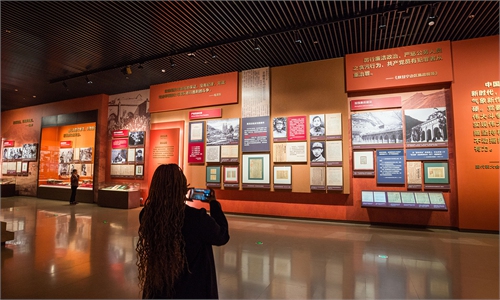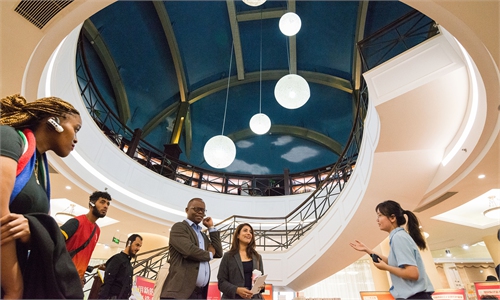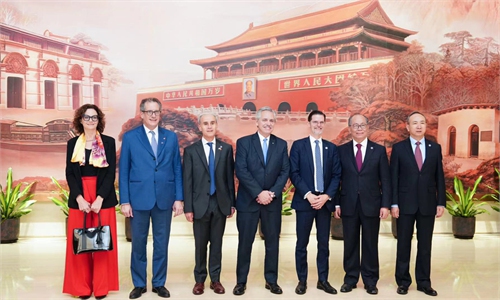ARTS / CULTURE & LEISURE
Memorial hall of the CPC 1st National Congress attracts young visitors with creative cultural products
Dissemination through art
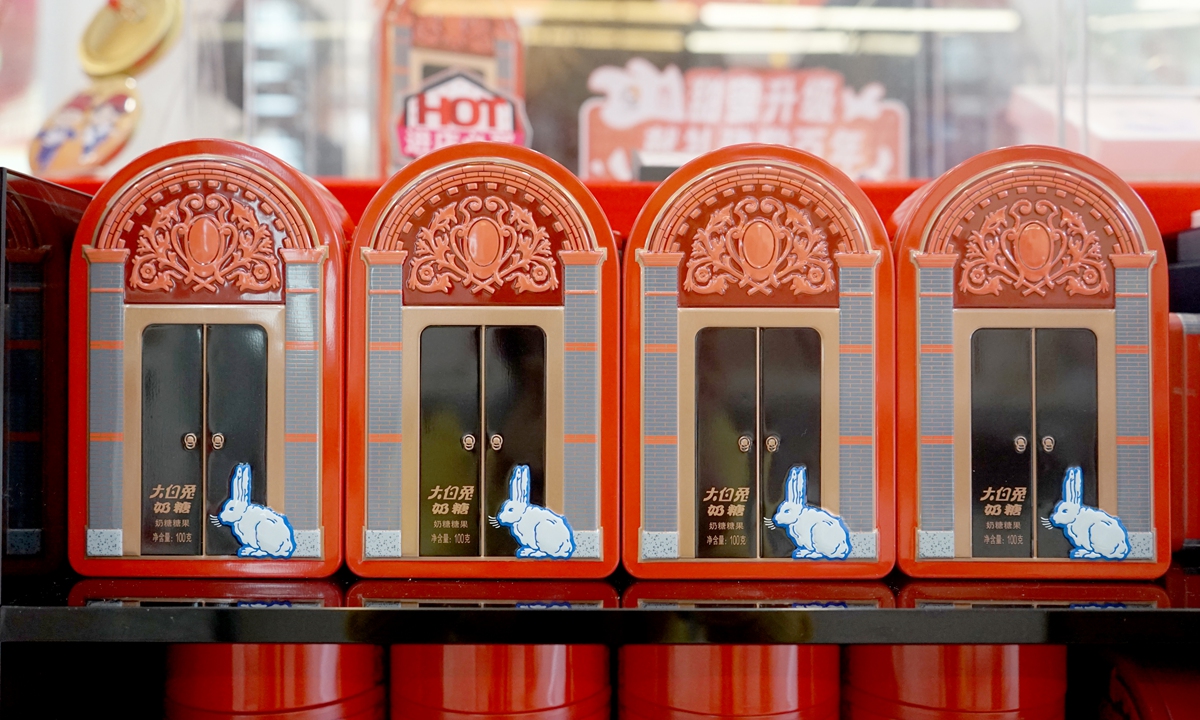
Milk candy gift boxes sold at the creative cultural product store of the Memorial Hall of the CPC First National Congress Photo: Chen Xia/GT
The Memorial Hall of the First National Congress of the Communist Party of China (CPC) in Shanghai, one of China's most renowned "red tourism" attractions, is flooded with visitors from across the country all year round. During this year's eight-day National Day holidays alone, the memorial received more than 140,000 visitors.As popular as the memorial is, a neighboring store that sells the memorial-themed creative cultural products saw scenes of customers waiting in long queues at the store's cashier counters during the holidays.
Red tourism attractions usually refer to the sites that combine sightseeing and red (patriotic) cultural education. As a witness to the CPC's early development in the early 20th century and now a representative venue where one can learn about the CPC's history and spirit, the memorial, similar to many other red tourism attractions across the country, is attracting an increasing number of young visitors in more relaxed and interesting ways.
Education is a shared social responsibility of red tourism venues, said Ruan Jun, deputy director of the memorial. "And creative cultural products can be a characteristic highlight in our red culture education," he told the Global Times.
Bestsellers
On a workday in mid-October, at the crowded creative cultural product store, Ruan shared with the Global Times some of their bestsellers with various design highlights.
Among the inventory is a milk candy gift box, for instance, designed to look like a Shikumen, a typical Shanghai house with a courtyard and stone-framed gates. The appearance of the box reminds customers of the Shikumen-style house where the first CPC National Congress was held in 1921. By scanning a QR code on the box, people can gain more information about the CPC pioneers who discussed the founding matters of the Party during its infancy.
Carefully thought out number symbolism is also a major feature of the gift box. Inside the box there are 21 candies, symbolizing the year the CPC was founded - 1921. The box's price - 28 yuan ($3.8) - "implies that the Party eventually led us to establish a new China in 1949 after 28 years of arduous struggles," Ruan explained.
Another quick seller is a calligraphy tracing book. The tracing book's contents are the Constitution of the CPC, making it a creative gift especially for teenagers, as they can practice calligraphy and learn the Party Constitution at the same time as they copy the Constitution by hand.
Including the milk candy gift box and the calligraphy tracing book, many of the memorial's creative cultural products have received awards at industry competitions. They have also won praise from customers.
"Market surveys showed the majority of the visitors to the memorial highly commended the designs and creativeness of our products," said Ruan.
According to the memorial, sales of its creative cultural products amounted to 26.34 million yuan in 2022, ranking among the top 10 Chinese museums and memorials.
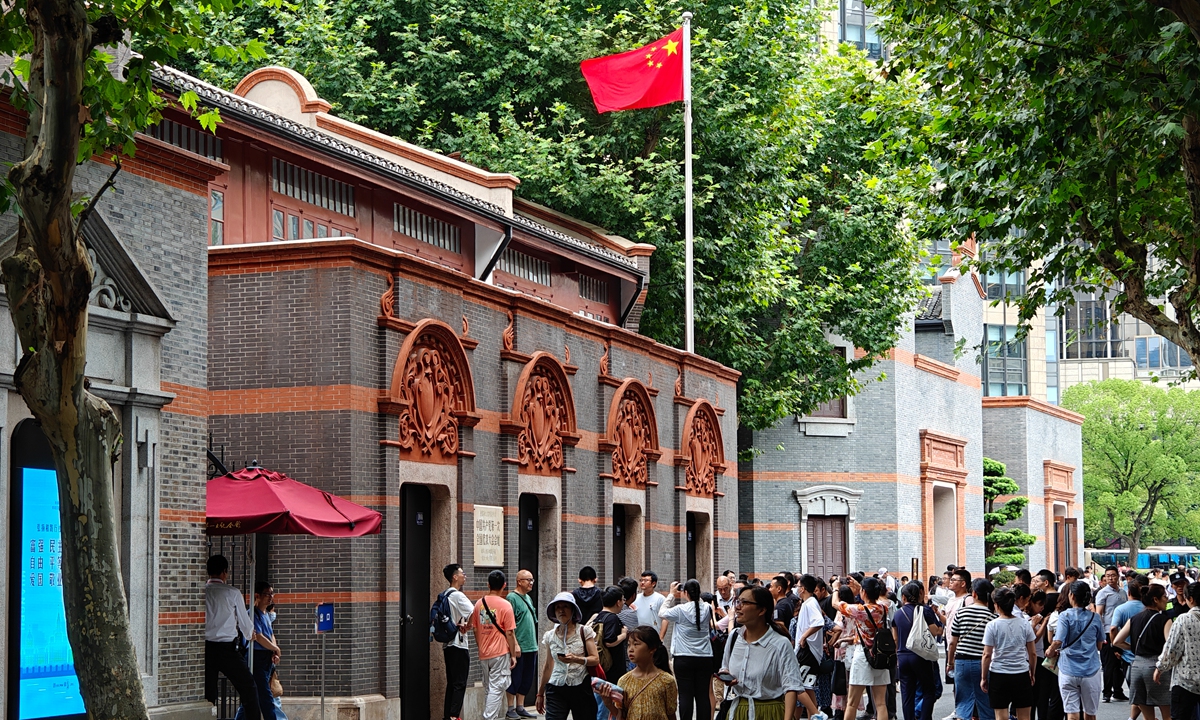
Tourists visit the Memorial Hall of the First National Congress of the Communist Party of China in Shanghai. Photo: VCG
A big challengeTo date the memorial has launched more than 600 products. "Our goal is to release 50 new products each year," said Ruan.
It's nonetheless not easy to design and develop a red culture-themed product. A big challenge during the process, as Ruan said, is to present the abstract "red spirit" in a visualized vivid way.
Many (history) museums can directly design their products to look like miniatures of the antiques they showcased, such as a porcelain-shaped fridge magnet, or a bronze ware-shaped ashtray, Ruan said.
"But what our memorial wants to spread through the products is the great spirit of the founding of the CPC and patriotic red culture," he noted. "It's not easy to turn these spiritual concepts into creative products that can arouse consumers' interest and resonate with them."
Therefore, the designers should possess a wealth of knowledge in both red culture and the tourism product industry. They must also be sensitive to the preference trends among young people: Data showed that 40 percent of the memorial's creative cultural product buyers are under 35.
Ruan cited as an example of a set of ice cream products released by the memorial. Apart from designing the ice cream into the shape of a teenager wearing a hat with a star on it, which symbolizes a patriotic Chinese youth, developers designed seven types of ice cream sticks to attract young consumers. "One is not able to know which stick he gets until he eats the ice cream," he explained, saying this "blind box-like idea" is very popular among Gen Zers.
Broader ways
The memorial started launching red-themed creative cultural products in 2021, the centennial of the CPC's founding. These products have broadened the dissemination of this red venue's content, Ruan said.
If all of the nearly 100 million CPC members visited the memorial once in a lifetime, it may take as long as 30 years, he told the Global Times.
"But through other ways, such as buying our creative cultural products online and offline, and using and sharing them, those who may not be able to come to the memorial in person can also easily learn about its culture and spirit."
Apart from launching products, the memorial has also made other efforts in recent years to enrich visitors' experiences, and explore broader avenues of red culture dissemination.
Some of the efforts involve setting up red-themed cafés, and building a metaverse platform for the memorial, Ruan said.
At this year's World Artificial Intelligence Conference held in Shanghai in July, the memorial displayed a beta version of the application scenario of its metaverse platform.
The platform, which contains online visits, red culture education, and a digital showcase of the memorial's exhibits, is expected to open to the public in the near future, said Ruan.

